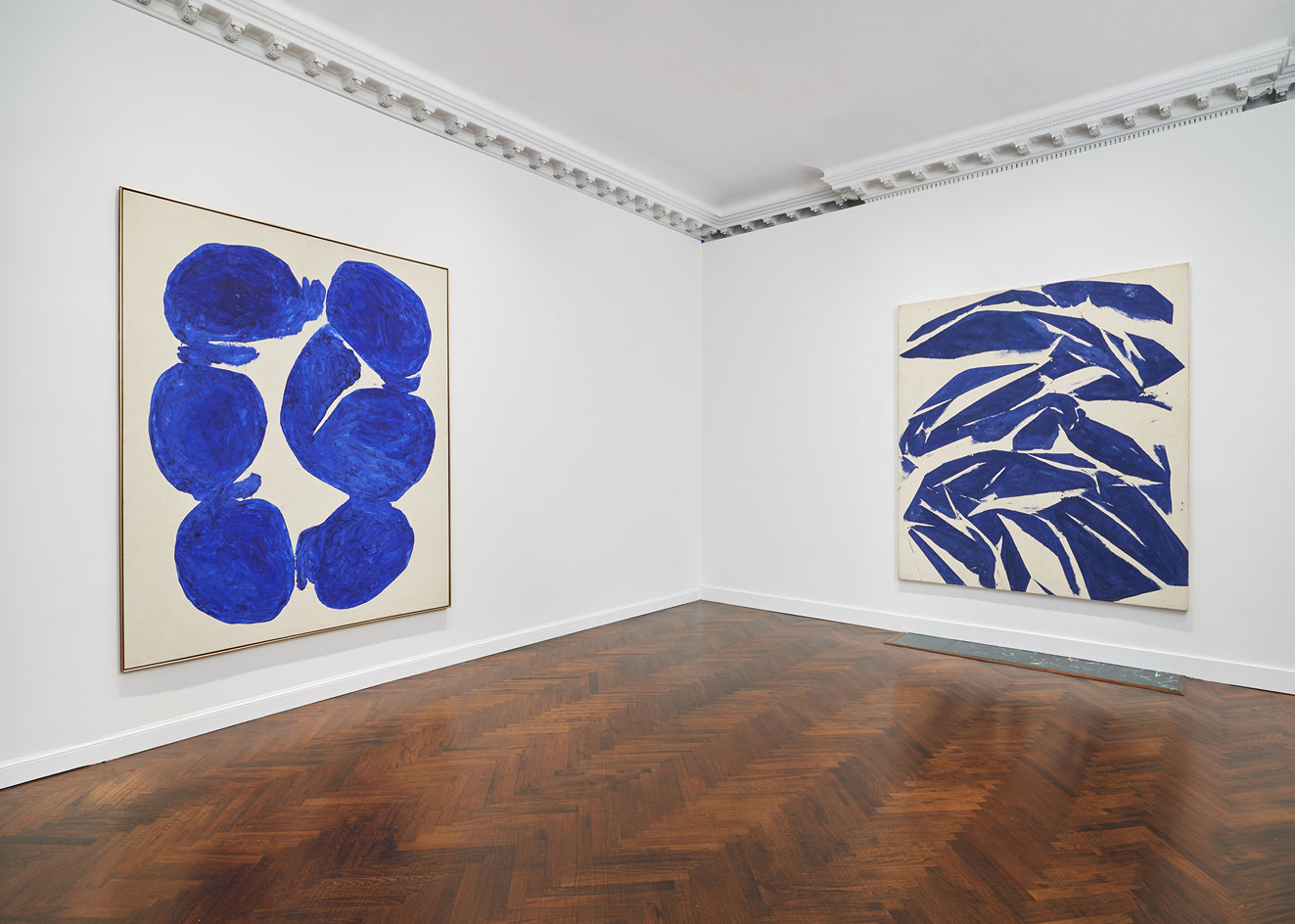Mnuchin Gallery celebrates history hidden in the folds of Simon Hantaï

Artists generally tend to be a little elusive, but it requires an especially strong sense of character to walk away from the art world and stop exhibiting altogether at the height of one's career. This is the tale of Simon Hantaï, the Hungarian-born Parisian painter, who withdrew into reclusion for 15 years (1983-98), shortly after representing France at the 1982 Venice Biennale.
While the creative period after Hantaï's hiatus has been considered as that of his finest work, the Mnuchin Gallery in New York is shining a spotlight on work created during his first mature period, from 1960-70. Co-curated by Alfred Pacquement, the former director of the Centre Pompidou (which staged a groundbreaking retrospective of Hantaï works in 2013), the exhibition primarily tracks Hantaï's early use of his 'pliage' method - an intricate technique of folding and knotting an unstretched canvas before Hantaï painted the configuration, unfolded and then stretched it, so that colourful geometric shards and unpainted negative space were revealed.
As the Mnuchin Gallery shows, this method, which Hantaï created whilst largely emulating the physicality of Jackson Pollock's paintings, develops rapidly over this ten-year period. Presented against the gallery's intimate townhouse setting, the large paintings reveal Hantaï's systematic experimentations with how the folds are placed, the consistency of how paint is applied, the use of different layers of colour and ultimately the creation of a formal composition. Each is a highly calculated marvel of creativity.
'[Hantaï] is an artist who worked for five decades, and that's just talking about the mature work. There are pre-1960 works that are more surrealist. We're talking about a big career,' explains the Mnuchin Gallery's partner Sukanya Rajaratnam. '1960 is really Hantaï's defining moment. He makes five distinct series in ten years, so I decided to just focus in on those ten years.'
With specimens from Hantaï's painterly 'Mariale' series (1960-62) to the almost Matisse-like 'Meuns' (1967-8) and the frenetic 'Études' (1968-1971), where the negative space forms take on a wing-like nature, the Mnuchin Gallery succinctly paints a portrait of Hantaï's dramatic evolution in a short span of time. And given that Hantaï's estate and most of his works are strictly controlled by his family, in accordance with his wishes not to be shown, the opportunity to view such an in-depth cross-section of the artist's career is truly a rare one.

Entitles 'Pliage', the show relates how Hantäi's now-recognised method of folding and squeezing canvas to create distinctive compositions developed over the decade

A work from Hatäi's Matisse-like 'Meuns' years (1967-68)

Frenetic 'Études', from 1968-71, their shards of negative space - a result of the pliage technique - like flapping wings

'1960 is really Hantaï's defining moment. He makes five distinct series in ten years, so I decided to just focus in on those ten years,' says the gallery's partner Sukanya Rajaratna

A number of works from his painterly 'Mariale' series from 1960-62 are on show
ADDRESS
Mnuchin Gallery
45 East 78th Street
New York
NY 10075
Receive our daily digest of inspiration, escapism and design stories from around the world direct to your inbox.
Pei-Ru Keh is a former US Editor at Wallpaper*. Born and raised in Singapore, she has been a New Yorker since 2013. Pei-Ru held various titles at Wallpaper* between 2007 and 2023. She reports on design, tech, art, architecture, fashion, beauty and lifestyle happenings in the United States, both in print and digitally. Pei-Ru took a key role in championing diversity and representation within Wallpaper's content pillars, actively seeking out stories that reflect a wide range of perspectives. She lives in Brooklyn with her husband and two children, and is currently learning how to drive.
-
 Ludovic de Saint Sernin launches a beauty and fashion collection with Zara
Ludovic de Saint Sernin launches a beauty and fashion collection with ZaraThe Paris-based designer unveils a collection inspired by New York City subcultures
-
 Inez & Vinoodh unveil romantic new photography series in Paris
Inez & Vinoodh unveil romantic new photography series in ParisA series of portraits of couple Charles Matadin and Natalie Brumley, created using an iPhone in Marfa, Texas, goes on show in Paris
-
 A Mexican town raises its game with Fernanda Canales’ Border Outlook
A Mexican town raises its game with Fernanda Canales’ Border OutlookBorder Outlook, a landmark community centre in northern Mexico designed by Fernanda Canales, goes above and beyond, giving hope to a region divided by the border wall